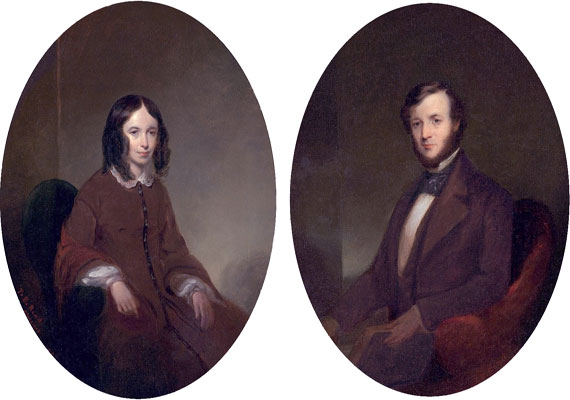The sea with its waves that thrash against the seashore comprises the Break, Break, Break setting. The poet has chosen this setting for the chaos of the sea mirrors the tumult of grief the poet feels upon the loss of his dear friend. The fishermen’s children going about their merry days and the ships moving forward on their voyage contrast the sadness and fruitlessness that define Tennyson’s mental state.
Break, Break, Break Line by Line Summary
This Break, Break, Break summary provides a stanza-wise explanation of the poem
Break, break, break,
On thy cold gray stones, O Sea!
And I would that my tongue could utter
The thoughts that arise in me.
Looking out into the sea in motion, Tennyson urges the waves to break upon the cold gray stones lining the sea shore. By observing the thrashing waves, the poet is trying to make tangible the storm of grief that he is feeling inside his heart. Just like the waves can break freely upon stones, the poet wishes he too could sob freely upon the loss of his dear friend, Arthur Hallum. Like the waves of the sea, Tennyson wants his thoughts to break upon his tongue and give rise to tumultuous words that can give honest expression to his surmounting grief.
O well for the fisherman’s boy,
That he shouts with his sister at play!
O well for the sailor lad,
That he sings in his boat on the bay!
The poet observes his surroundings and becomes painfully aware of how starkly they contrast the atmosphere inside his mind. He can see children of fishermen playing amongst each other – brothers calling out to their sisters. There is also present a jolly sailor who sings while setting sail in his boat. The atmosphere around Tennyson is one of mirth – something he cannot relate to for he is mourning the loss of his dear friend. His surroundings make him realize how disconnected he is from the joys of the world for his grief is holding him back.
And the stately ships go on
To their haven under the hill;
But O for the touch of a vanish’d hand,
And the sound of a voice that is still!
The poet then looks at the grand ships that are sailing towards their destinations – some towards the port and some beyond the horizon. These ships are going forward on their voyage but, unlike them, the poet feels trapped in the past. The journey forward seems difficult to the poet for he is stuck, desperately wishing he could hold his friend’s hand again or just listen to his voice. And for this reason, Tennyson seems to lack the purpose and activity the ships seem to possess.
Break, break, break,
At the foot of thy crags, O Sea!
But the tender grace of a day that is dead
Will never come back to me.
In the final stanza, the poet appeals to the sea once again to break itself upon jagged rocks. Just like the sea keeps breaking upon the rocks but cannot move past them, similarly, the poet cannot move past the loss of that wonderful time when his friend was alive and close. In this stanza, the poet draws a parallel between his state and the sea. Just like the sea’s movements, even his movements to move on from the loss of his friend are futile, for what is gone can never be restored.
Break, Break, Break Central Idea
The Break, Break, Break central idea revolves around loss and lamentation. The poet, while observing the world of the sea with its violent waves, the merry fishermen’s children, and grand ships, tries to connect the same with his mental atmosphere. The poet is grieving the loss of his dear friend, which has put him in a state of deep mourning. The movement of the waves reminds him of the pain inside his heart that is itching to break free like the waves into tears and words. The gaiety and bustle of daily life remind him that life must go on, but the poet feels paralyzed with grief and the only thoughts he can muster are those that take him back to his dead friend.
Break, Break, Break Analysis
In this Break, Break, Break analysis, we will engage with the poem at a deeper level.
The poem, Break, Break, Break is an elegy by Tennyson in which he grieves the loss of his dear friend, Arthur Hallum. Although Tennyson gives voice to his pain in the poem in different ways, he begins the poem by saying he wishes he could make his sorrow break open on the surface of his tongue just like the sea waves break open on the stones of the shore. Grief seems to have occupied all of Tennyson’s senses and he wishes to alleviate his pain by making his sorrow flow as tumultuously as the waves of the sea.
Tennyson remarks upon how untouched the world is by his sorrow. The fishermen’s children are going on about their merry day and the ships are journeying ahead as if nothing terrible has happened. This bustle of activity around him makes Tennyson more aware of the state of paralysis that his grief has put him into. Unlike the fishermen’s children, he is unable to enjoy the little joys of daily life. Neither does he have a sense of purpose and direction like the ships, for he keeps getting yanked backward into the past, reminiscing the fond days when his friend was by his side.
Consumed by grief, Tennyson has reached a stage when everything seems futile to him. Just like the waves keep dashing against the shore but are unable to move ahead, always withdrawing back into the sea, even the poet finds that his attempts to restore the happiness of his past are in vain. No matter how hard he tries, he cannot shake off the terrible feeling that he will never see the light of day with his friend again.
This poem is reflective of the deep love Tennyson felt for his friend. Grief has a way of making life seem unbearable. This elegy of Tennyson’s mirrors this exact mental state of his. No matter where he looks, everything takes him back to thoughts of his loss. By utilizing the sea and his surroundings, Tennyson is trying to make sense of the pain he feels by drawing parallels and contrasts between the external world and his internal world. Just like there are waves in the sea dashing against the rocks, even his painful thoughts swim inside his head, waiting to break through. The futility of the sea to move ahead, despite all the action of the waves, reminds him of his own ineffectual struggle to move beyond the pain of losing his friend. The world around is indifferent to the poet’s loss. Hence, the gaiety and activity he sees in the external world pose a sharp contrast to the paralysis he feels within.
The whole poem has been divided into four stanzas of four lines each. Thus, the poem comprises a string a four quatrains. Each quatrain follows the rhyme scheme of ABCB, meaning the second and the fourth lines always rhyme with each other. Each quatrain has been worded in irregular iambic tetrameter. Perhaps the irregularity is there in the poem to mirror the regular waves of the sea. However, the rhythmicity of the waves have also been emulated through the steady ABCB rhyme scheme.
Break, Break, Break Theme
The following are the Break, Break, Break themes:
Grief: Tennyson’s grief over the loss of his friend, Arthur Hallum, forms the backbone of the poem. Everything the poet observes around him, he connects to his pain of losing his dear friend. The movement of the sea waves make him wish that he too could mobilize his grief in the manner that the waves break against the rocks. The futility of the sea to move beyond the rocks, despite its mad thrashing, makes him connect that inactivity with the state of paralysis his grief has put him into. The world around going on about its day, with the fishermen playing and the ships journeying ahead make his grief more conspicuous, for unlike his surroundings, Tennyson is unable to move on with his life – so imposing is the grief he feels.
Nature: Nature has a way of mirroring the mental framework of humans, for we seek to make tangible in our surroundings what we feel inside our hearts. The poet, while looking at the waves of the sea in a grieved state, finds that it mirrors the pain that he carries inside his heart, waiting to burst out. Just like the sea is unable to move beyond the rocks, even the poet is unable to move past the pain he feels upon losing his friend.
Death: Since the poem is the lamentation of the poet over the loss of his friend, death forms an overarching theme in the poem. The poet by speaking about his friend in terms like “a vanish’d hand” and “a voice that is still” makes it clear that his friend is dead. Lines such as, “But the tender grace of a day that is dead will never come back to me” point towards the finality of death.
Break, Break, Break Poetic Devices
Below we will discuss the Break, Break, Break poetic devices.
Tennyson uses the poetic device of apostrophe when he addresses the sea directly. Additionally, the poet also uses the device of repetition by repeating the word “Break” three times.
The usage of “tongue” is a synecdoche where a part (tongue) is replaced for the whole (the poet).
A metaphor has been drawn to describe the poet’s thoughts as waves that arise in him.
The poet uses alliteration by repeating the h sound in “haven under the hill”.
We find the usage of synecdoche once again in “vanish’d hand” and “a voice that is still” where parts have been mentioned to refer to the whole (the poet’s friend).
The rhetorical device of personification has been used throughout the poem where the poet addresses the sea as if it is a human capable to responding to him.
Conclusion
Break, Break, Break by Lord Alfred Tennyson is a heart-rending elegy where the poet professes in tender details the deep grief he feels upon the loss of his dear friend, Arthur Hallum. Tennyson wonderfully employs his surroundings to give voice to the pain that brims his mind. This lyric of the poet not just bears testimony to Tennyson’s craftsmanship of minting emotions into words but also allows readers to feel the intensity of his love for his lost friend.
Some online learning platforms provide certifications, while others are designed to simply grow your skills in your personal and professional life. Including Masterclass and Coursera, here are our recommendations for the best online learning platforms you can sign up for today.
The 7 Best Online Learning Platforms of 2022
- Best Overall: Coursera
- Best for Niche Topics: Udemy
- Best for Creative Fields: Skillshare
- Best for Celebrity Lessons: MasterClass
- Best for STEM: EdX
- Best for Career Building: Udacity
- Best for Data Learning: Pluralsight
















